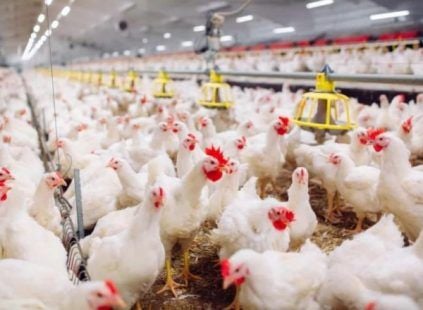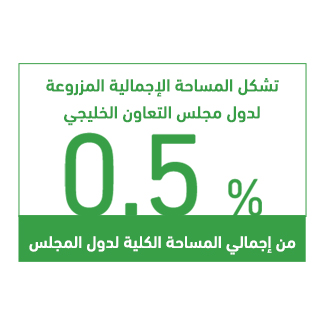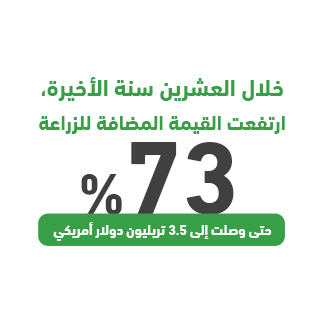“Mashroo3k” Economic Consulting Company offers a feasibility study for a broiler chicken farm project with the highest profitability and the best payback period. This is achieved through a set of accurate studies of the agricultural production sector in the Sultanate of Oman, along with a thorough analysis of local and foreign competitors’ strategies, and the ability to deliver competitive pricing offers.

The broiler chicken farm project is one of the initiatives that attracts the attention of the Omani government and funding agencies in the Sultanate of Oman, as it provides a basic commodity for many food security sectors that seek to advance under the Omani government’s Vision 2040. The farm aims to produce and supply broiler chicken to several sectors, such as: refrigeration and freezing units, poultry shops, supermarkets, hotels, restaurants, and hospitals.
Consultants from Mashroo3k Economic Consultancy indicate that the diversity of sectors contributed by broiler chicken farms makes them an attractive option for investors looking to invest in Oman, given the state’s policies to revitalize the agricultural sector.

mashroo3k Consulting Company provides investors looking to invest in a broiler farm project in the Sultanate of Oman with a range of specialized feasibility studies, based on updated databases specific to the Omani market, which aids in the project’s success, achieving the highest profit return, and the best payback period, through analyzing the strategies of local and foreign competitors and offering competitive price quotes.


Full attention to the quality of the produced poultry.
Thorough inspection and testing of poultry before sale.
Selection of high-quality and premium feed for fattening poultry.
A medical and technical team with proven expertise and efficiency.
Careful selection and examination of chicks prior to purchase.
Ensuring chicks are sourced from hatcheries monitored by relevant authorities.
Selection of chicks with appropriate and uniform weight.
Ongoing care for the farm, with strict attention to cleanliness of the farm and brooders.
Consideration of weather conditions, ventilation, and nutrition for the raised poultry.
Executive summary
Study project services/products
Market Size Analysis
Risk Assessment
Technical study
Financial study
Organizational and administrative study

There is no doubt that the agricultural sector holds great importance in today’s global economies. It contributes to achieving self-sufficiency and food security, reduces unemployment, alleviates poverty, and serves as the primary source of raw materials for numerous manufacturing industries. Around 935.6 million people are employed in this vital sector, representing 28.3% of the global workforce.
According to the latest statistics, the total crop production in the GCC countries is estimated at around 8.7 million tons, with Saudi Arabia alone contributing 60.5% of the total production. Oman follows with approximately 19.1%, and the UAE with 12.5%, while the remaining percentage is shared among the other GCC countries.
Vegetables make up 41% of the total crop production in the region. They are the leading agricultural product in Kuwait, Bahrain, Qatar, Oman, and Saudi Arabia.
Saudi Arabia leads the region in vegetable production, contributing 55.1% of the total.
Grains account for 7% of total crop production in the GCC (approximately 1.9 million tons), with the UAE leading in this category, contributing 42.9% of the total.
The total quantity of fish caught in the GCC is estimated at 740 thousand tons, with Oman accounting for 74.8% of this total.
There are 124,700 fishermen in the GCC, with 40% of them in Oman and 33% in the UAE.
The number of fishing boats in the region is 41,100, of which Oman possesses 57.7%, followed by Saudi Arabia with 26.6%.
Despite these figures, the contribution of the agricultural sector to global GDP does not exceed 4%. This percentage must be reconsidered in light of the future: by 2050, the global population is expected to exceed 9 billion people, and the agricultural sector will be solely responsible for feeding this population and protecting it from hunger.
The total land area of the GCC countries is approximately 2.4 million square kilometers, of which 11.8 thousand square kilometers are cultivated—representing just 0.5% of the region’s total land area.
Across most GCC countries, cultivated land makes up less than 1% of total land area—except for Bahrain, where cultivated land represents 4.8% of the total.
Fruit production in the GCC is expected to flourish in the coming years, with a compound annual growth rate (CAGR) of 3.8%.
Over the past 20 years, the value added by agriculture has increased by 73%, reaching USD 3.5 trillion.
Agriculture represents 4% of the total global GDP.
The sector employs 874 million people, accounting for around 27% of the global labor force.
The total agricultural land area globally is 4.8 billion hectares, divided into:
3.2 billion hectares of pastures and meadows.
1.6 billion hectares of cultivated crops.
Global Primary Production Volumes:
9.4 billion tons of crops.
337 million tons of red and white meat.
883 million tons of fruit.
1.128 billion tons of vegetables.
201 million tons of vegetable oils.
883 million tons of dairy products.
83 million tons of eggs.

According to data from the Food and Agriculture Organization of the United Nations (FAO), hunger is on the rise, with the number of people suffering from undernourishment reaching 770 million worldwide—a staggering figure that we hope agriculture can help reduce through its output.
It is worth noting that global agricultural land has decreased by 127 million hectares between 2000 and 2019—an area roughly the size of Niger. Similarly, forest areas shrank by 94 million hectares during the same period, equivalent to the size of the United Republic of Tanzania.
Undoubtedly, these figures are somewhat alarming, especially considering the growing global population. For this reason, “Mashroo3k” Consulting supports investing in the agricultural sector, aiming to meet the increasing demand for food and contribute to global food security.